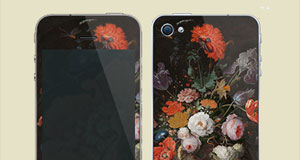? Commissioned by Pieter Roose (1586-1673), Brussels, Granvelle Palace, 1657; {Even if partly hypothetical, the line of ownership presented here can be viewed as most probable. Given the biographical data and the dating of the present work, Pieter Roose emerges as the only possible patron. The accuracy of this premise is confirmed by the sculpture’s mention in the estate inventory of his sole heir, Pieter Ferdinand Roose, at Granvelle Palace. My thanks to Bruno Joos de ter Beerst, Ghent, and Ms Danielle Maufort, Antwerp, for their corroboration of this finding (oral communication, 11 November 2016 and written communication 20 October 2016). For the Roose family’s genealogy, see B.J. de ter Beerst, _Notice généalogique et historique de la famille Roose_, Ghent 2015 (unpublished typoscript, in the Object File). Pieter (or Pierre) Roose was Lord of Froidmont, Ham-sur-Sambre and Jemeppe. In 1632, he was appointed as Hoofd-voorzitter van de Geheime Raad (Head Chairman of the Secret Council), but also as chairman of the Raad van State (Council of State), the latter being the most important political office in the Southern Netherlands at this time. During the summer months, Roose resided at Froidmont Castle; during the winter months, he lived at Granvelle Palace in Brussels. The artist and poet Anna Roemer Visscher (1584-1651) corresponded with and wrote poems to Pieter Roose.} his nephew Pieter Ferdinand Roose (d. 1700), since 1683 Baron of Bouchout, Granvelle Palace, Brussels, 1673;{In 1663, Pieter Roose established a perpetual entail on his estate, thus establishing by testamentary will that all his possessions and titles would consistently pass onto the eldest living male relative. See B. Volckaert, _[De leden van de Geheime Raad der Zuidelijke Nederlanden onder het bewind van de aartshertogen Filips IV (1609-1653): Een prosopografische studie](http://www.ethesis.net/geheime_raad/geheime_raad_inhoud.htm)_ 2004 (thesis University Ghent). The testamentary will is preserved at the Royal Library of Belgium (Brussels), Handschriftenkabinet, inv. no. 15401 (my thanks to Dr Michiel Verweij, Brussels). See also Brussels, Stadsarchief, Oud Archief, no. 66 (_Papiers intéressants de la famille Roose_), liasse 470 and Brussels, Rijksarchief Brussel I (Anderlecht), Fonds Notariaat Generaal van Brabant 890/1 (my thanks to Dr Luc Janssens, Rijksarchief in Brussels I).} his grand-nephew Melchior-François Roose (1688-1745), Baron of Bouchout, Antwerp or Castle of Bouchout, Meise (near Brussels), 1700;{That Melchior-François Roose, grandson of Pieter Ferdinand’s brother, Albert, was his heir is affirmed by the wording of the title of the 1703 inventory of his portrait collection, see the Archives of the City of Brussels, Oud Archief, no. 66 (_Papiers intéressants de la famille Roose_), liasse 470: _Liste vande portraiten vande familie van Roose met dewelcke den Inventaris vande meubelen van wylen den heere Baron van Bouchout is belast en dewelcke in vier cassen sijn gesonden naer Antwerpen aenden heere Melchior François Roose desselfs eenigen geinstitueerden erfgenaem testamentair op den 23 octobris 1703_ (‘…sent to Antwerp to Lord Melchior François Roose the same sole instituted testamentary heir’; unpaged and unnumbered).} ? his son Arnold Melchior Roose (d. 1760), 1745; ? his cousin Pierre Jean-Alexandre Joseph, Count Roose de Baisy (1724-1782), Baron of Bouchout and burgomaster of Antwerp, Antwerp or Castle of Bouchout, Meise (near Brussels), 1745; ? his son Charles-Pierre Joseph, Count Roose de Baisy (1768-1817), Baron of Bouchout, Castle of Bouchout, Meise (near Brussels), 1782; his daughter Elisabeth, Countess Roose de Baisy (1807-1873), married to Amadée de Beauffort (1806-1858), Castle of Bouchout, Meise (near Brussels); {Count Charles-Pierre Joseph Roose de Baisy (1768-1817), Baron van Bouchout (1782-1817) had three daughters and no sons; the _Recumbent Greyhound_ was likely inherited by Countess Elisabeth Roose de Baisy (1807-1873), the wife of Amadée de Beauffort (1806-1858), from 1825 on director of the Museum voor Schone Kunsten in Brussels. The couple resided at Bouchout Castle, which, from 1832 on, was restored in the neo-Gothic style by the Belgian architect Tieleman Frans Suys at De Beauffort’s instigation. De Beauffort possessed a great deal of the Roose family’s material, possibly indicating that many of the items previously belonging to Pieter Ferdinand Roose and his descendants had remained behind at Bouchout Castle. At the time of her death in 1873, Countess Elisabeth was thought to be the wealthiest woman in Belgium. What befell the _Recumbent Greyhound_ after this time - possibly held in the possession of Elisabeth’s descendants - remains unclear.} …; purchased from an Antwerp mansion,{E. Dhanens (ed.), _De beeldhouwkunst in de eeuw van Rubens in de Zuidelijke Nederlanden en het prinsbisdom Luik_, exh. cat. Brussels (Museum voor Oude Kunst) 1977, no. 130.} by Baron Freddy Rolin, Brussels, before 1977;{For the dealer Freddy Rolin (1919-2001), primarily specialized in African art, see _African and Oceanic Art from the Estate of the Late Baron Freddy Rolin_, sale cat. Amsterdam (Christie’s) 2 July 2002, p. 9.} sold to Galerie René Withofs, Brussels, 1977;{At the time of the exhibition _De beeldhouwkunst in de eeuw van Rubens in de Zuidelijke Nederlanden en het prinsbisdom Luik_, Brussels (Museum voor Oude Kunst) 1977. Information provided by Dr Helena Bussers, Brussels (written communication, 17 August 2009). According to Danielle Maufort (oral communication, 11 November 2016), the sculpture was also in the possession of a Belgian dealer named Meulenbeek or Meulebeek(e) during this period.} private collection, New York, 1977;{As communicated by Daniel Katz Ltd., London.} …; acquired by Axel Vervoordt, Antwerp, 1999; from whom acquired by Daniel Katz Ltd., London, 2008; from whom, €475,000, to the museum, with the support of the BankGiroLoterij, March 2008
Bibliography and list of abbreviations for the provenance (pdf)


